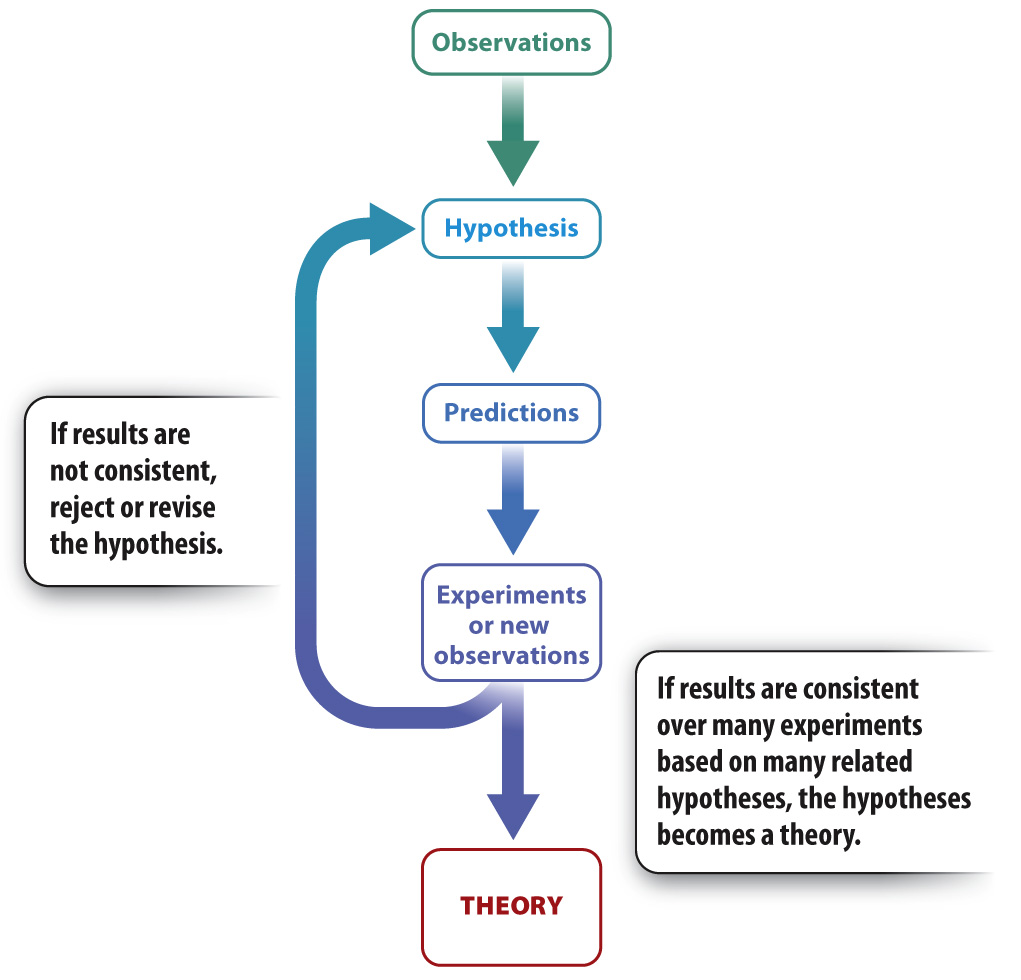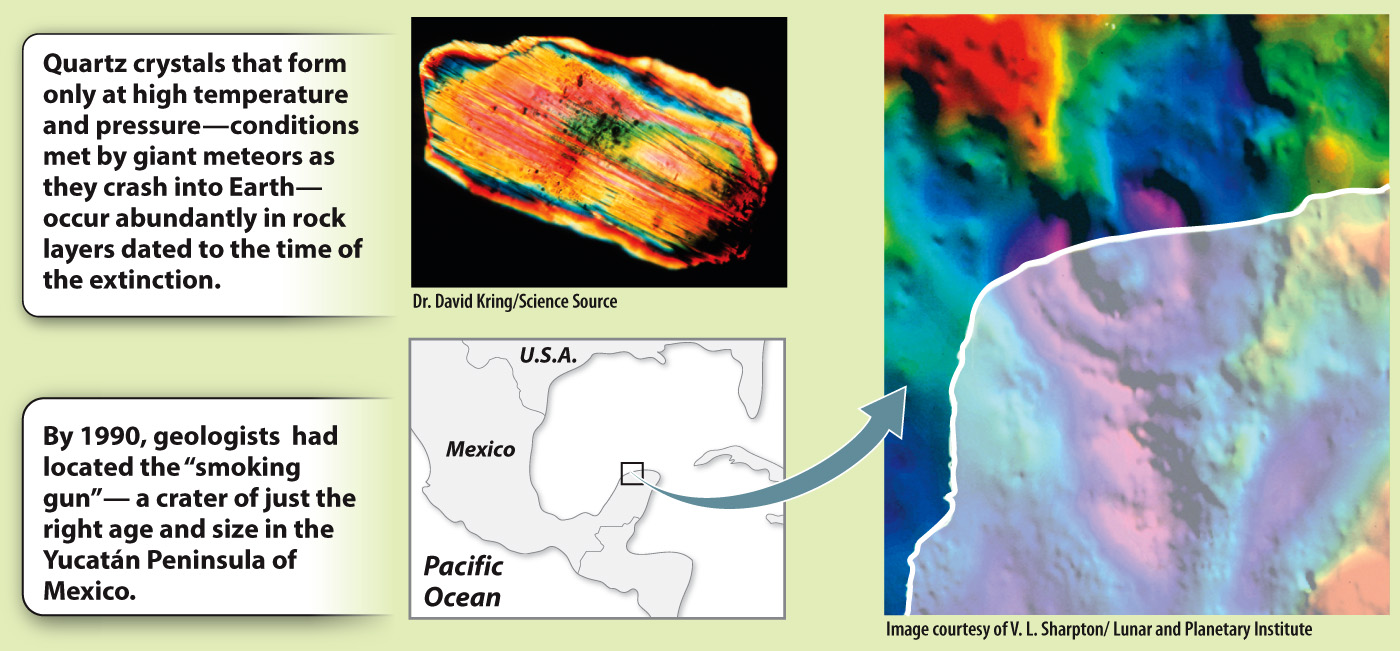A hypothesis makes predictions that can be tested by observation and experiments.
Not just any idea qualifies as a hypothesis. Two features set hypotheses apart from other ways of attacking problems. First, a good hypothesis makes predictions about observations not yet made or experiments not yet run. Second, because hypotheses make predictions, we can test them. That is, we can devise an experiment to see whether the predictions made by the hypothesis actually occur, or we can go into the field to try to make further observations predicted by the hypothesis. A hypothesis, then, is a statement about nature that can be tested by experiments or by new observations. Hypotheses are testable because, even as they suggest an explanation for observations made previously, they make predictions about observations yet to be made.
Quick Check 1 Mice that live in sand dunes commonly have light tan fur. Develop a hypothesis to explain this coloration.
Quick Check 1 Answer
One hypothesis is that their tan fur protects the mice from predators by allowing them to blend in with their surroundings.
Once we have a hypothesis, we can test it to see if its predictions are accurate. Returning to the hummingbird and flower, we can test the hypothesis that the bird is transporting pollen from one flower to the next, enabling the plant to reproduce. Observation provides one type of test: If we catch and examine the bird just after it visits a flower, do we find pollen stuck to its beak or feathers? If so, our hypothesis survives the test.
Note, however, that we haven’t proved the case. Pollen might be stuck on the bird for a different reason—
We might also use observations to test a more general hypothesis about birds and flowers. Does red color generally attract birds and so facilitate pollination in a wide range of flowers? To answer this question, we might catalog the pollination of many red flowers and ask whether they are pollinated mainly by birds. Or we might go the opposite direction and catalog the flowers visited by many different birds—
Finally, we can test the hypothesis that the birds visit the flowers primarily to obtain food, spreading pollen as a side effect of their feeding behavior. We can measure the amount of nectar in the flower before and after the bird visits and calculate how much energy has been consumed by the bird during its visit. Continued observations over the course of the day will tell us whether the birds gain the nutrition they need by drinking nectar, and whether the birds have other sources of food.
In addition to observations, in many cases we can design experiments to test hypotheses. One of the most powerful types of experiment is called a controlled experiment. In a controlled experiment, the researcher sets up several groups to be tested, keeping the conditions and setup as similar as possible from one group to the next. Then, the researcher deliberately introduces something different, known as a variable, into one group that he or she hypothesizes might have some sort of an effect. This is called the test group. In another group, the researcher does not introduce this variable. This is a control group, and the expectation is that no effect will occur in this group.
Controlled experiments are extremely powerful. By changing just one variable at a time, the researcher is able to determine if that variable is important. If many variables were changed at once, it would be difficult, if not impossible, to draw conclusions from the experiment because the researcher would not be able to figure out which variable caused the outcome. The control group plays a key role as well. Having a group in which no change is expected ensures that the experiment works as it is supposed to and provides a baseline against which to compare the results of the test groups.
For example, we might test the hypothesis that hummingbirds facilitate pollination by doing a controlled experiment. In this case, we could set up groups of red flowers that are all similar to one another. For one group, we could surround the flowers with a fine mesh that allows small insects access to the plant but keeps hummingbirds away. For another group, we would not use a mesh. The variable, then, is the presence of a mesh; the test group is the flowers with the mesh; and the control group is the flowers without the mesh since the variable was not introduced in this group.
Will the flowers be pollinated? If only the group without the mesh is pollinated, this result lends support to our initial hypothesis. In this case, the hypothesis becomes less tentative and more certain. If both groups are pollinated, our hypothesis is not supported, in which case we may discard it for another explanation or change it to account for the new information.
Quick Check 2 Design a controlled experiment that tests the hypothesis that cigarette smoke causes lung cancer.
Quick Check 2 Answer
One experiment would be to take two large populations of laboratory mice and introduce cigarette smoke into the cages of one population but not the other. Do mice subjected to smoke develop cancer at rates that are significantly higher than those of the control group? We can also make observations of human populations: Do smokers develop lung cancer at rates significantly higher than those of nonsmokers?

Using observations to generate a hypothesis and then making predictions based on that hypothesis that can be tested experimentally are the first two steps in the scientific method, outlined in Fig. 1.2. The scientific method is a deliberate and careful way of asking questions about the unknown. We make observations, collect field or laboratory samples, and design and carry out experiments or analyses to make sense of things we initially do not understand. The scientific method has proved to be spectacularly successful in helping us to understand the world around us. We explore several aspects of the scientific method, including experimental design, data and data presentation, probability and statistics, and scale and approximation on LaunchPad.
To emphasize the power of the scientific method, we turn to a famous riddle drawn from the fossil record (Fig. 1.3). Since the nineteenth century, paleontologists have known that before mammals expanded to their current ecological importance, other large animals dominated Earth. Dinosaurs evolved about 210 million years ago and disappeared abruptly 66 million years ago, along with many other species of plants, animals, and microscopic organisms. In many cases, the skeletons and shells of these creatures were buried in sediment and became fossilized. Layers of sedimentary rock therefore record the history of Earth.
Working in Italy, the American geologist Walter Alvarez collected samples from the precise point in the rock layers that corresponds to the time of the extinction. Careful chemical analysis showed that rocks at this level are unusually enriched in the element iridium. Iridium is rare in most rocks on continents and the seafloor, but is relatively common in rocks that fall from space—
HOW DO WE KNOW?
FIG. 1.3
What caused the extinction of the dinosaurs?
BACKGROUND Dinosaurs were diverse and ecologically important for nearly 150 million years but became extinct about 66 million years ago.
OBSERVATION

HYPOTHESIS The impact of a large meteorite disrupted communities on land and in the sea, causing the extinction of the dinosaurs and many other species.
PREDICTIONS Independent evidence of a meteor impact should be found in rock layers corresponding to the time of the extinction and be rare or absent in older and younger beds.
FURTHER OBSERVATIONS

CONCLUSION A giant meteor struck Earth 66 million years ago, causing the extinction of the dinosaurs and many other species.
FOLLOW-
SOURCE Alvarez, W. 1998. T. rex and the Crater of Doom. New York: Vintage Press.